Coming to Quy Nhon without visiting Ghenh Rang, tourists will surely feel very regretful. Once arriving, people are easily enchanted by the beauty that is both wild and poetic: rocky rapids stacked like fossilized waves, Egg beach stretching with thousands of smooth round pebbles as if polished for thousands of years, the sound of waves murmuring like an endless love song. That beauty is not noisy, not brilliant but deep, gentle like a sad song that softens the hearts of visitors.
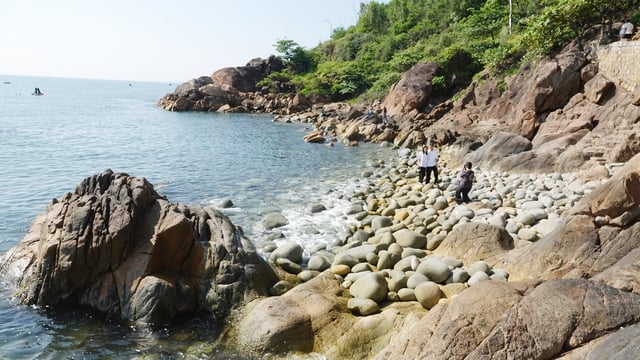
The foot of Xuan Van mountain juts out into the sea, creating beautiful rocky outcrops.
PHOTO: HOANG TRONG
WATER PAINTING BY THE OCEAN
About 4 km southeast of Quy Nhon city center, Ghenh Rang landscape appears like a giant ink painting, stretching from the foot of Xuan Van mountain to the sea. Rows of rocks connect silently, winding along the mountainside, both wild and looking like they have been carved by the hand of nature.
A special highlight is Egg Beach, also known as Queen's Beach. Unlike many other beaches, which have golden sand or gentle waves, this place is filled with smooth, round pebbles, layered like "dragon eggs" lying in the sun. Each time a wave comes in, the rocks shine silver, sparkling as if waking up from a fairy tale dream.

Queen's Beach attracts many people to check-in
PHOTO: TRUONG DANH KHOI
That quiet, secluded beauty once captivated Queen Nam Phuong. Legend has it that during a visit to Binh Dinh with King Bao Dai, she chose this rocky beach as a private place to swim. Since then, people have called this place Queen's Beach.
According to Mr. Bui Tinh, Director of Binh Dinh Provincial Museum, not far from Hoang Hau beach, King Bao Dai once built a 3-storey resort facing the sea. This was where he stopped every time he went to Binh Dinh. Later, people called it Bao Dai's Palace. In the book Binh Dinh - Famous Places and Monuments (Hong Duc Publishing House, 2020) edited by Professor, Doctor of Science Vu Minh Giang, it is clearly stated that in 1927, King Bao Dai built a palace in Ghenh Rang, including a 3-storey villa and facilities for resting and enjoying. The building was destroyed in 1949, now only ruins remain.

Egg Beach is covered with smooth round pebbles.
PHOTO: TRUONG DANH KHOI
WHERE STONE KEEPS OLD LOVE STORIES
Not only is it a famous place, Ghenh Rang is also a land of sad legends. The ancients recounted that in the Bong Son area (now Hoai Nhon Town, Binh Dinh Province), there was a beautiful, gentle, skillful young woman who was good at making conical hats. She fell in love with a young man in the village. Her beauty, like a morning flower, unexpectedly became a disaster when she caught the eye of a lustful district official. He immediately relied on his power and forced her to become his concubine. To keep her oath to her lover, she fled her hometown and went to Quy Nhon.
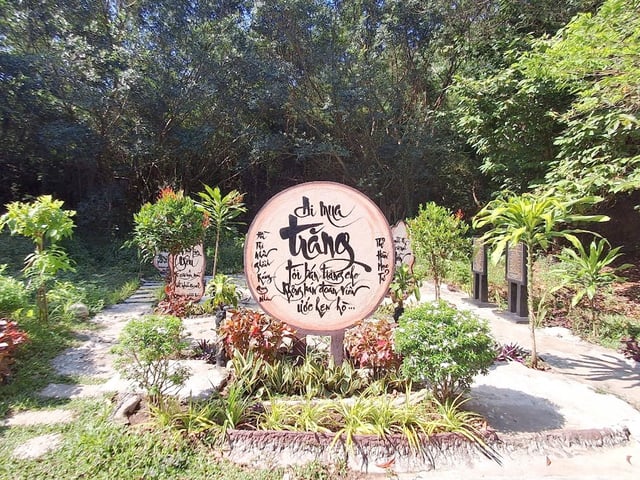
The stele with Han Mac Tu's poem is placed on Ghenh Rang hill.
PHOTO: HOANG TRONG
The district magistrate's soldiers pursued her relentlessly. Desperate, one stormy night, she fled to the dangerous mountain area of Ghenh Rang. When the soldiers were about to capture her, thunder and lightning suddenly broke out. A mountain crevice suddenly split open, and she disappeared into the night... From then on, this land was also called Ghenh Rang - Tien Sa.
THE SORTER SLEEPS AMONG THE CLOUDS AND WAVES
If rocks and seas are the voices of heaven and earth, then on the windy hill, Han Mac Tu's poetry is the endless echo of man sent into the vastness. From the gate of Ghenh Rang tourist area, the small slope named Mong Cam curves softly like a talented ink stroke drawn up the hillside, leading to Thi Nhan hill, where the poet Han rests amidst the vastness of the sky and sea.
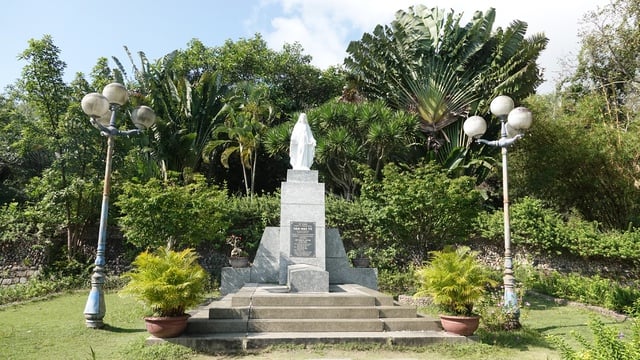
Tomb of Han Mac Tu on Thi Nhan hill
PHOTO: HOANG TRONG
The road is not long, the slope is not too steep, but each step on the mossy stone path seems to touch a page of life filled with pain and romance: unfinished love, terrible illness, loneliness resounding in each poignant verse. Han Mac Tu's tomb lies humbly on the top of the hill, hidden under the trees rustling in the wind and the sound of the waves echoing.
People who visit Thi Nhan Hill, after bowing their heads in memory of the talented poet, often stop by the souvenir stall of the "fire pen" artist Dzu Kha, a person who has spent more than three decades diligently preserving and spreading the poetic legacy of Han Mac Tu. Every day, he quietly carves each verse of Han Mac Tu's poems into wood with a burning pen, as if rewriting a never-ending love for poetry.
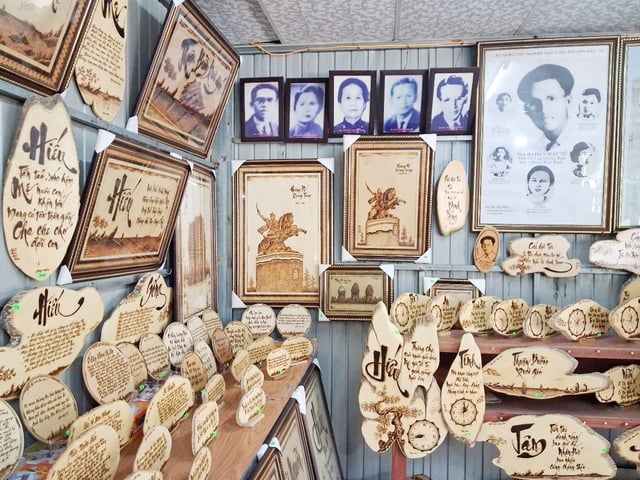
The souvenir counter of "fire pen" Dzu Kha displays many poems of Han Mac Tu.
PHOTO: HOANG TRONG
According to artist Dzu Kha, Han Mac Tu is one of the most talented and tragic poets of modern Vietnamese literature. In the last years of his life, he suffered from a serious illness and had to live in constant pain at Quy Hoa leprosarium. But it was also there that Han Mac Tu wrote fierce verses like a flash of lightning at the end of the sky, shining brightly in the darkness of fate. The poet died in 1940, at the age of 28, and was initially laid to rest in Quy Hoa. Nearly two decades later, his grave was moved by his family and friends to Thi Nhan hill, where nature and poetry harmonize, where his soul still seems to wander in the clouds of Quy Nhon. (to be continued)
According to the People's Committee of Binh Dinh province, Ghenh Rang was recognized by the Ministry of Culture and Information (now the Ministry of Culture, Sports and Tourism) as a national historical, cultural and scenic relic in 1991. Currently, Binh Dinh is systematically planning this place to preserve the landscape, develop sustainable tourism, preserve the soul of nature and historical vestiges. The Chairman of the People's Committee of Binh Dinh province assigned the Department of Construction to urgently establish a detailed plan at a scale of 1/500 for the Xuan Van mountain area, to be completed in May 2025.
Source: https://thanhnien.vn/nhung-tuyet-tac-thien-nhien-ban-giao-huong-cua-da-song-va-huyen-thoai-185250513231846495.htm






![[Photo] Readers line up to visit the photo exhibition and receive a special publication commemorating the 135th birthday of President Ho Chi Minh at Nhan Dan Newspaper](https://vphoto.vietnam.vn/thumb/1200x675/vietnam/resource/IMAGE/2025/5/17/85b3197fc6bd43e6a9ee4db15101005b)
![[Photo] Nearly 3,000 students moved by stories about soldiers](https://vphoto.vietnam.vn/thumb/1200x675/vietnam/resource/IMAGE/2025/5/17/21da57c8241e42438b423eaa37215e0e)









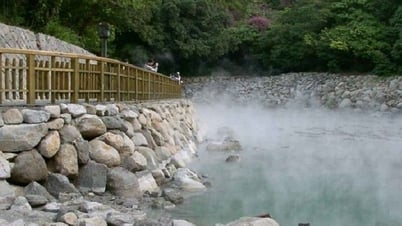






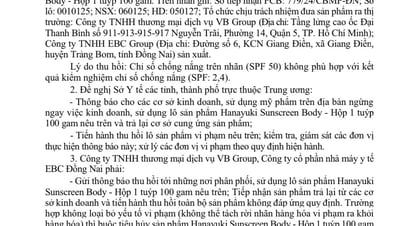


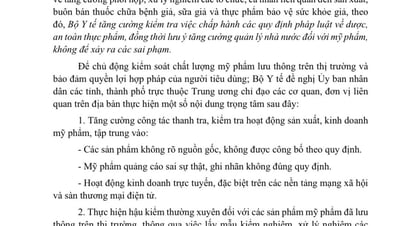





































































Comment (0)